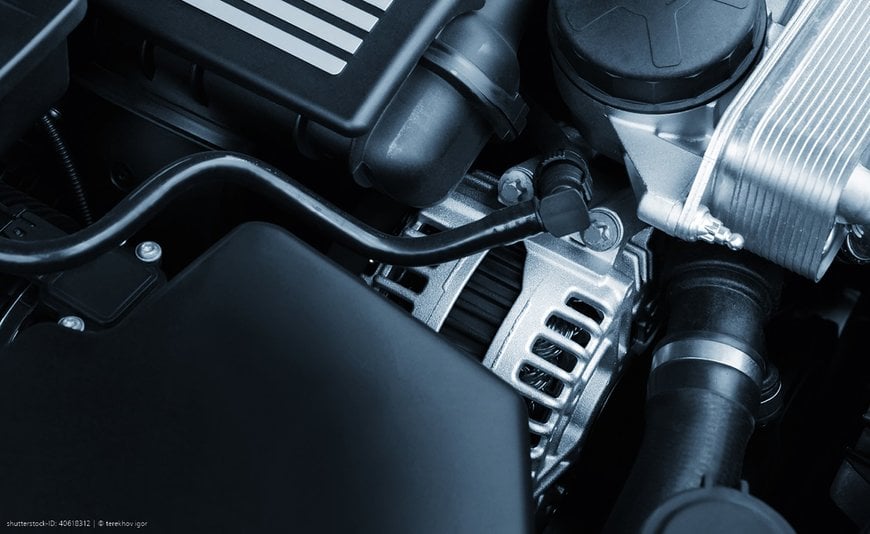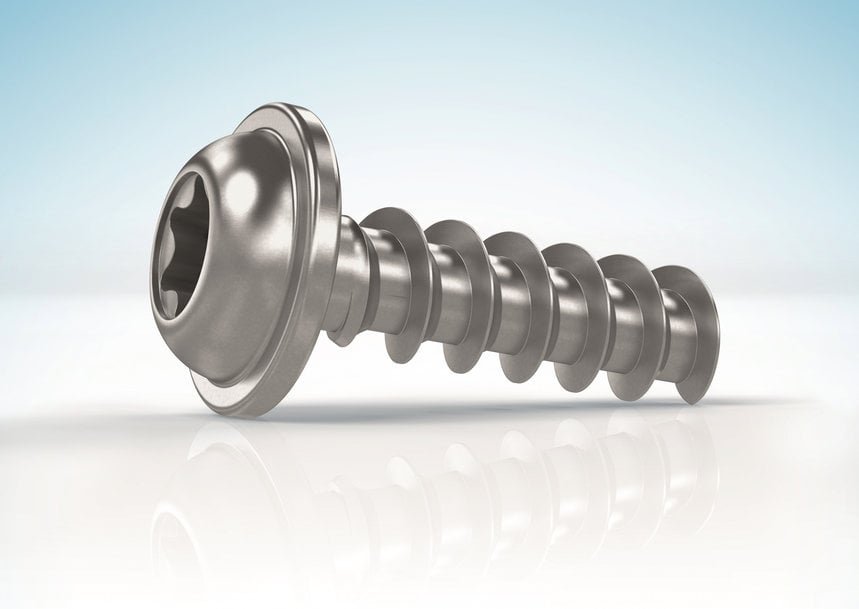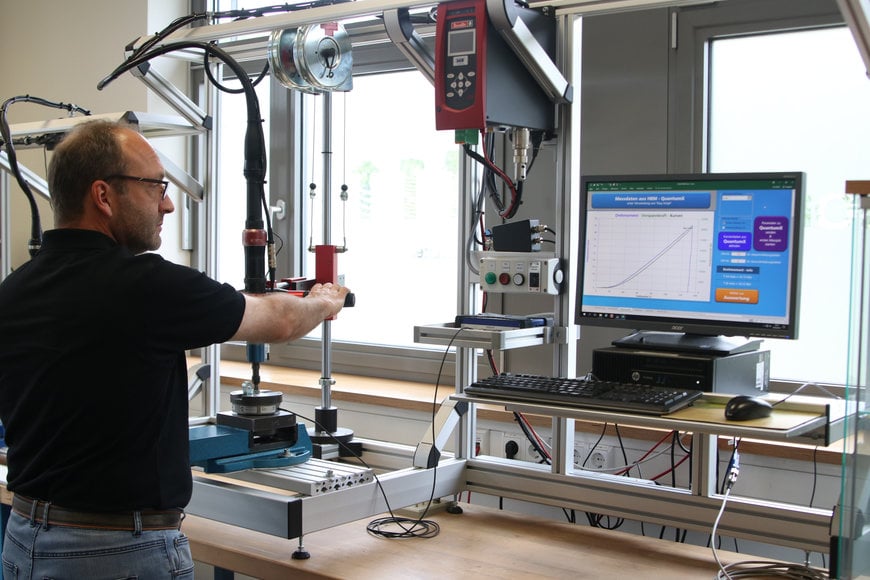www.magazine-industry-usa.com
26
'23
Written on Modified on
ARNOLD UMFORMTECHNIK: Weight optimization through direct plastic screw fastenings
Innovative fasteners for high-performance plastics.

With plastic screw fastenings, many different factors can influence the quality of the joint. The challenge is to find a screw geometry that compensates any negative aspects such as tolerance variations. It is also important for the fastening solution to be optimally adapted to the composition of the material and the type of load.
Text: Annedore Bose-Munde
The strength of the material, the conditioning of the plastic, fibre orientation and the type of fibre, viscoelastic deformation behaviour, component or screw tolerances such as pilot hole and screw diameter, or even the accuracy of the screw system - all these factors must be taken into account when it comes to implementing direct plastic screw fastenings. And to determine whether a particular screw geometry is suitable for a specific application, it is also important to know the direct plastic screw fastener’s quality parameters. The quality parameters are: high overtorque, low insertion torque, high preload force and pull-out force.
“If we consider the classical torque curve, the goal is to achieve the highest possible preload force with a moderate screw-in torque and the highest possible overtorque. At the same time, to ensure the fastening is secure, it is important to have a sufficiently large delta torque between driving and overturn. This prevents the screwdriver from stopping in the event of fluctuation before the head setting has been reached, or on the contrary, ripping out the formed nut thread. The optimum tightening torque is also determined via the delta torque," says Sinja Strobl. She is Application Sales Manager at Arnold Umformtechnik GmbH & Co. KG and responsible for the design of screw fasteners and the multiplication of applications, as well as for technical application consulting in the fields of plastics and electrification.

Fig. 2: The optimized thread core of Remform screws increases the vibration resistance and the breaking torque of the screw, resulting in a more stable connection between the two parts of the joint,
Direct screw fastening of thermoplastics
In series production, it is usually not possible to monitor the preload force, so the torque serves as a guidance value. In tests at Arnold Umformtechnik, the preload force is determined by connecting a load cell. This allows a specific force to be assigned to each recorded torque. Another useful quality parameter is the point of failure. Destructive tests are used to determine how thread failure occurs. "The optimum point of failure is when the nut thread overtightens. In this case, a repair solution is possible. Of course, in the case of plastics with a very high glass-fibre content, the screw can also break. Normally however, with direct plastic screw fastening, the plastic is always the weaker link and thus is the first to fail", explains Strobl. "Any occurrence of so-called dome cracking or dome breakage should be prevented. The reason for such this type of failure is almost always a faulty design of the screw dome."
Thread-forming screws with asymmetric thread profile
Direct plastic threaded fasteners are a process-reliable and cost-optimized solution for joining plastic components. For example, Remform screws from Arnold Umformtechnik (thread-forming screws with an asymmetrical thread profile) offer several advantages over conventional plastic screws with 30° flank angles: The optimized thread core significantly increases the vibration resistance as well as the screw’s breaking torque. This leads to a more stable connection between the parts of the joint, but also allows for a higher assembly torque when joining high-strength plastics without the risk of screw breakage.
Another improvement on the 30° flank angle is the radius profile of the thread flanks. Since a comparatively high speed is used for direct plastic screw fastening, the material heats up locally during screw fastening and becomes soft. The radius profile of the thread flank in the Remform screw exploits the flow behaviour of the plastic and, with the higher material volume, the plastic is displaced towards the load-bearing flank without strong stress peaks occurring. The steep load flank of 12° enable the required pretensioning force to be generated while at the same time ensuring a high level of assembly reliability. The plastic must be able to absorb the applied preload force evenly without risking dome breakage due to excessive radial stresses.
While the screw is being driven in, the plastic becomes malleable due to the heat input. To keep the stresses that occur low, special attention must be paid to the flank angle. "The comparatively shallow inclination of the load-bearing flank allows a steeper orientation of the force vector in the axial direction. This puts less stress on the tube when it is screwed in and reduces the risk of dome breakage," explains Sinja Strobl. In addition, the radius profile produces a torque that steers the plastic directly to the steep flank while the screw is being driven in. The asymmetrical geometry thus lowers the radial force and increases the axial force, which means significantly higher thread overlap and pull-out force compared to a symmetrical profile. The high thread overlap also provides a larger shear area. This increases the overtorque of the joint. The lower load on the nut material also allows higher preload forces and a long-lasting joint with maximum residual preload force. To meet these tough requirements for direct plastic screw fastenings, a material of property class 10 is used.

Fig. 3: Arnold Umformtechnik manufactures the Remform II HS for particularly demanding applications. It is used in applications where high load-bearing screw fastenings, high preload force and a high degree of loosening security are required, for example with harder, fibre-reinforced plastics.
Advantages and areas of application
The geometric and material properties of Remform result not only in high assembly reliability and preload force, but also enable process-reliable repeat screw fastenings. This means the end customer can carry out repairs on parts assembled with direct plastic screw fastenings. In contrast to conventional plastic fasteners using sleeves, bolts and nuts, the single-sided accessibility of direct plastic fasteners not only reduces the complexity of the components, but also the number of small parts.
And finally, the process flow for direct plastic screw fasteners is leaner than for conventional plastic screws fasteners. The component can be moulded directly with optimally designed pilot holes and then assembled using plastic screws. This eliminates cost and process time drivers such as the handling of different small parts or higher mould costs and process times for placing the insert inside the mould. "Wherever lightweight construction, high forces and cost optimization need to be combined, you can find plastic direct screw fasteners”, says Sinja Strobl, enumerating the areas of application. “For example in printed circuit boards, where installation space is severely limited and the use of inserts is not possible, or in highly stressed components such as wing mirrors, pumps, valves or oil filters. In many plastic applications, plastic direct screw fastening is used with specifically designed attachment points.”
Fastening solutions for harder, fibre-reinforced plastics
For particularly demanding applications, Arnold Umformtechnik produces the Remform II HS (High Strength) using a specially adapted manufacturing process and based on corresponding test data. This is principally intended for applications where high load-bearing screw fastenings, a high preload force and a high degree of loosening security are required. It is characterized by an optimized, enlarged thread core, which significantly increases not only the fatigue strength but also the breaking torque of the screw. This leads to a more stable connection between the two parts of the joint, but also allows for a higher assembly torque when joining high-strength plastics without the risk of screw breakage.
Another improvement is the rounded radius profile of the thread flanks. This means that there is no deformation of the thread flanks even when driving the screw fastening into fibre-reinforced plastics, and it ensures that the joint is secure and has a high load-bearing capacity. The purpose of the steep load flank is to generate the necessary pretensioning force while at the same time ensuring high assembly reliability. The reduced inclination of the load-bearing flank and the increased plastic content on the contact surface resulting from the radius profile enable a steeper orientation of the force vector in the axial direction. This reduces the risk of dome breakage by minimizing radial stress while increasing the transmissible force. "This innovative geometry makes the Remform II HS an ideal product for use in high-performance plastics," says Strobl.

Fig. 4: “In many plastic applications, plastic direct screw fastening is used with specifically designed attachment points." says Sinja Strobl, application sales manager at Arnold Umformtechnik GmbH & Co. KG.
Testing, predicting and calculating
Customers can ask Arnold Umformtechnik’s Fastener Testing Centre to investigate whether the selected fastening solution is suitable for their application. In the Fastener Testing Centre, they have access to extensive up-to-date testing equipment and screw fastening technology. The techniques used are IATF 16949 compliant. Where needed, it is also possible to avail of other internal and external laboratories, for example for materials testing or micrograph preparation. Each test is documented in a detailed test report, which is tailored to the customer's requirements.
And if the actual part to be tested is not yet available, customers have the option of using the Fast Designer Plastics forecasting tool to predict the assembly process and assembly prestressing forces during the design process. This can significantly reduce costly testing effort. "We get an early indication of the screw driving torque, the optimum tightening torque and the predicted preload force with Fast Designer Plastics. This should then be followed up by a validation by means of tests on the original component," says Strobl, citing the different options for developing a fastening solution that fits precisely to the given application.
Captions:

